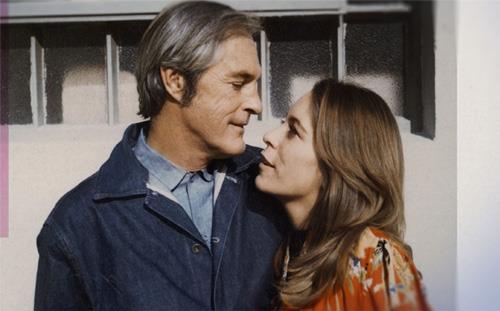
If you're the sort of reader who is fascinated by footnotes and the intriguing little side stories they sometimes promise, you might enjoy My Psychedelic Love Story, a documentary that premieres at 9 p.m. ET Sunday on Showtime.
While it primarily references events in the 1970s, it's really a footnote to the 1960s and Timothy Leary. Leary became famous and notorious in the Sixties for telling the world that everyone should free his or her mind by taking the hallucinogenic drug LSD.
Errol Morris's documentary revisits part of the story of Leary, who died in 1996, through the eyes of Joanna Harcourt-Smith, his romantic partner from 1972 to 1977.
Since Leary spent most of those years in prison, Harcourt-Smith's memories of their relationship come off rather like bookends.
Their time began when he was a fugitive, leading American authorities on a trip – so to speak – across Europe and into Afghanistan, where he was eventually apprehended.
She fought for his release and finally helped win it. One night not too long after that, as she describes it, they had a terrible fight. The next morning when she woke up, he was gone, and she never saw him again.
Okay, as love stories go, maybe this isn't one of the top five. But then, My Psychedelic Love Story has more on its mind than LSD-fueled romance.
Built primarily on the recollections and commentary of Harcourt-Smith (who died of cancer last month), My Psychedelic Love Story ends up focusing on why Leary eventually got cozy with the FBI – the agency that made him a fugitive in the first place.
One theory, popular at the time though increasingly academic all these years later, is that he turned informant to reduce his prison sentence.
He was released after serving about four years of a 95-year sentence, which renders that theory not unreasonable. Morris goes further, though, into the corollary suggestion that Harcourt-Smith was a CIA plant sent undercover to seduce Leary and "turn" him.
She talks about that here, a lot, and concludes that it might be true. She just doesn't know for sure, one way or the other.
If that sounds weird, perhaps part of the explanation lies in her tales of how she and Leary, before he was captured, were taking LSD every day while they led their whirlwind chase across Europe.
Let's consider the possibility that amount of acid might, just might, affect your perception and memory.
Let's also consider the possibility that Harcourt-Smith's long years in the '60s counterculture – she was a player who hung out with folks like the Rolling Stones – left her permanently infused with the vague mysticism that was part of that counterculture's exotic charm.
Like, man, what really is truth?
Since neither she nor Morris gives us any concrete answers on the Leary question, My Psychedelic Love Story doesn't add much to his footnotes or re-elevate him much about footnote status himself.
More interesting is the portrait of Harcourt-Smith and how the idle rich floated through that world. It's not entirely different from the way the idle rich float through the world today, with a veneer of excitement and glamour that starts to look more and more like well-appointed aimless drifting once you take a few steps back.
Time has a way of providing that perspective, and there are passages of My Psychedelic Love Story that will make 2020 viewers shake their heads. Still, as footnotes go, it makes Timothy Leary's and Joanna Harcourt-Smith's corner of the world a little clearer.